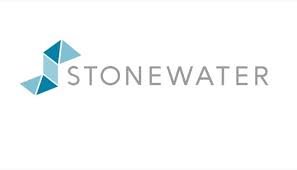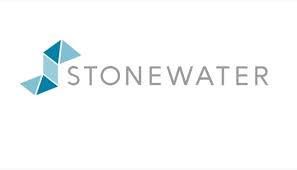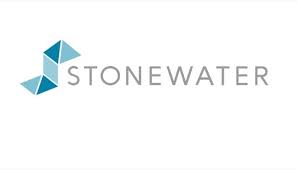Title Page
Property Details
-
Asset Reference
-
DMC Case number
-
Type of property
-
Approx Build year
-
Construction Type
Survey Details
-
Survey undertaken on
-
Weather conditions
-
Author
Survey purpose
-
Concerns raised
Caveats and Limitations
-
2.0 This survey aims to identify the causes and remedies of damp and mould issues at the time of the survey; it is not a full building or regulatory survey.
2.1 Roof and floor voids were not inspected. Services were only visually examined. The premises were furnished and fitted with floor coverings, and no assessments could be made to any elements which were covered, unexposed or inaccessible.
2.2 Opinions as to dampness are based on a combination of visual inspection and electronic moisture meter readings. No destructive testing was carried out.
2.3 At the time of my inspection, the property was furnished and occupied. Where parts of the property were covered, unexposed or inaccessible and close inspection was not possible I am unable to comment on the condition of such elements. It may be possible therefore that damage arising from woodworm infestation, wood rot and decay or vermin infestation etc. may be present without my knowledge that becomes apparent subsequent to this report.
2.4 I have not carried out any specialist tests to determine whether any high alumina cement (HAC), calcium chloride, wood-wool slabs for permanent shuttering, calcium silicate bricks or fibrous asbestos materials were used in the original construction or any subsequent additions to the building, and as such, I am unable to report that the building is free from any hazard or hazards caused by these materials.
2.5 I have not tested services or installations such as the drains, sewerage, water, electricity and gas or any heating, ventilation or fire/lighting systems and I am unable to express an opinion as to their suitability, condition, or installation without the benefit of specialist’s advice.
2.6 The premises were inspected so far as fittings, furnishings, floor coverings and stored materials or stock allowed, and no provision was made for the temporary removal of these items.
2.7 The report shall not be regarded as a form of specification and further investigation and measurement will be required prior to the preparation of a specification and description of works.
Equipment used and Guidance Notes
-
Moisture Measurement:
The GE Protimeter Moisture Measurement System (MMS) was used to measure wall, ceiling surfaces and timber skirting boards. Readings expressed as wood moisture equivalent (relative reading) The electrical resistance meter is calibrated to timber, therefore this type of instrument may be used a moisture meter to record accurately moisture levels in softwood timbers up to 28%.For timber to be acceptably dry the normal hygroscopic moisture level in soft wood timbers would be in the range of up to 8-14% for timbers to be decaying the moisture level of soft wood timber would need to be in excess of 20- 22%.
For measurements of dampness in masonry and plaster the electrical resistance meter offers a comparative reading (relative reading) to the moisture content of wood. For example if a relative reading in masonry or plaster is above 22% then this could be determined as a damp reading, on the basis that if a piece of timber was affixed to that section of masonry or plaster then eventually the moisture content of the timber would equilibrate with the wall and when the moisture content of timber exceeds 20-22% the timber would begin to decay.
Electrical capacitance meter (Part of the functionality of the GE moisture measurement system) with a radio frequency penetration of 19mm was used to randomly check (map) and test wall surface areas for any indication of raised reading (notional scale of 60-999) where readings above 199 can be an indication of dampness providing there is no conductive materials present at or below the surface of the wall being tested (see below). Electrical resistance meters can also record high relative readings from a range of ‘conductive’ materials that can be present in some building materials i.e. carbon, salts, metals, magnesium oxychloride etc. Great care has to be taken in the examination of the materials tested as to whether any conductive materials may be present. If in any doubt then it may be appropriate to undertake an invasive test using the Calcium Carbide method of chemical testing or taking samples of materials for testing by oven drying, weighing and subjecting the materials to a constant 75% relative humidity environment (Gravimetric test).
Relative Humidity:
During the survey, a Protimeter Hygromaster 2 thermal hygrometer was used to measure internal air temperature and relative humidity within the rooms surveyed. In general, the agents of decay in building materials – moulds, fungi, mites – can develop where the relative humidity in a room is between 75 – 85 per cent. Relative humidity above 85 per cent will cause these agents of decay to develop much more quickly.
The hygrometer also features an infra-red non-contact probe (Hygrostick). On a given building material, such as a plastered wall, the probe is used to assess the surface temperature at the time of the survey and the temperature at which condensation would occur (dew point) in that material. The temperature difference then provides an indication of how likely condensation is to occur. For example, if a plastered wall had a surface temperature reading of 10oC and a dew point temperature of 12oC, it would confirm that condensation is occurring at that moment. If the same wall had a surface temperature of 15oC, it would mean that the temperature would need to drop only 3oC for condensation to occur.
Hygroscopic salt contamination is to be considered; Chlorides and Nitrates (salts) can be retained within building materials and from groundwater (rising damp). As the water evaporates, these salts are left in the building and become concentrated on the wall surface over many years. These salts absorb moisture in the air, causing damp patches, and will grow and contract depending on the season and internal conditions.
Gypsum, lime, and renovating plasters can have an impact on damp issues, and while these will be commented upon if identified, this is often difficult without testing, and therefore, assumptions may be made.
Summary of Findings
-
Damp, mould and condensation issues are often challenging to identify straightaway due to the many complex and interrelated fabric, environmental, geographical, and human issues. What works in one property may not work in another with nearly identical conditions. A phased approach may be needed to create an equilibrium where suchissues are no longer problematic.
-
On the balance of probability the cause of the damp and mould is
External Observations
-
undefined
-
Are repairs required?
-
Recommended works
Hallway Observations
-
undefined
-
Are repairs required?
-
Recommended works
Living room Observations
-
undefined
-
Are repairs required?
-
Recommended works
Kitchen Observations
-
undefined
-
Are repairs required?
-
Recommended works
Bathroom
-
undefined
-
Are repairs required?
-
Recommended works
Bedroom 1 Observations
-
undefined
-
Are repairs required?
-
Recommended works
Bedroom 2 Observations
-
undefined
-
Are repairs required?
-
Recommended works
Bedroom 3 Observations
-
undefined
-
Are repairs required?
-
Recommended works
Other
-
undefined
-
Are repairs required?
-
Recommended works
Damp and Mould RAG rating
-
undefined
- Green
- Amber
- Red
-
What temporary repairs are needed to make the property safe until the defects can be permanently rectified?
-
Is a Decant required?
During the survey, did you observe and/or discover any further issues that needed immediate escalation e.g., safety, safeguarding or vulnerability issues?
-
-
Further issues for escalations
-
Are there are reasonable adjustment considerations?
-
What are they?
Are any follow on investigations required?
-
-
Follow on investigation required and expected time to complete.
Surveyor details
-
Name
-
Qualifications
-
Add signature
-
Email
-
Phone 01202 319119
-
Date and Time survey complete










